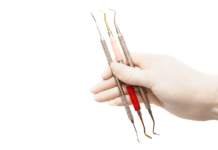Differences that exist among clinicians can be problematic within a dental office, including clinic workflow, systems, dental coding, and philosophies. A dental practice is rarely aware of this problem, and it’s even rarer to find an office that addresses these differences in its entirety.
The bottom line is quite simple. What do we really feel is best for our patients? An essential element for a high-functioning dental hygiene department is calibration. Clinical calibration means understanding and committing to what the office philosophy is. Dentists establish core values in their dental practices, and these values are an important part of case acceptance by patients. The doctors develop these calibrated protocols to help lead staff members toward clarity for patients during the treatment process.
Consistent Dental Care
The hygiene department in a dental office plays a substantial role in consistently delivering services relating to the quality of care. Any lack of consistency can impinge on the quality of care, further impacting the profitability of the dental office.
A critical component to a healthy and productive hygiene department is consistency; consistency not only in philosophy but also in coding and sequencing. This includes periodontal procedures, x-rays, in-office fluoride treatments, sealants, and cosmetic procedures such as whitening.
To have an efficient hygiene department ─ one that provides the very best patient care day in and day out ─ it is vital for the entire team to be consistent all the time. All efforts that are repeated day in and day out can be a great measure of success. Are our patients healthy? Are our patients happy and fulfilled? Are they telling their friends and family about their dental experience?
For happiness and retention of existing patients, offer services consistently day in and day out, year after year. This makes patients (and staff) feel more comfortable and at ease. The simple task of consistency makes patients more attracted to the dental practice and creates more room for growth.
The latest research shows a connection between consistency and productivity. Employees thrive when they consistently have high levels of challenging work to do, and employees display greater performance and well-being when the level of challenging tasks they work on is consistent or stable over time.1 Anyone reading this likely agrees that dentistry is challenging!
Remember that consistent action creates a consistent result. If a doctor consistently talks about the risks associated with fractured teeth and the importance of crowns, patients are more apt to have crowns completed. Sometimes patients just have not been offered a treatment or haven’t been offered the treatment consistently. Maybe we forget, or maybe the conversation seems too daunting – scared of our recommendations being rejected.
By implementing and following a consistent protocol that includes effective practices and strategies, the success of your practice and the overarching health of your patients are imminent.
Calibrating Dental Procedures
We will never 100% be calibrated, and that is OK. After all, we are all wired to think and behave in different ways. Different philosophies exist in the dental world. Some dentists treat decay when it is two-thirds through the enamel, while some wait to restore until the decay has mushroomed into the dentin. Within the hygiene department, subtle differences may exist among the team using ultrasonic scalers versus hand scaling or with protocols such as x-rays and non-surgical periodontal therapy, to name a few.
Dentistry is not black-and-white, and humans are all unique and different. The overarching goal of clinical calibration is to provide the best patient care possible consistently. We can simplify our daily routines by taking the guesswork out of it. We do this by having set protocols and procedures in place to deliver optimal patient care.
Recognizing the need for calibration can be difficult. With the hustle and bustle of a busy clinical day, we aren’t always in tune with what is going on around us with other patients and members of the team. The need to have an open mind is now, and being open to change is now. You work with a team of highly trained and valued professionals committed to giving patients comprehensive dental care. Create value in your teamwork and learn from each other. The utmost experienced clinicians strive to learn and challenge themselves daily.
I recommend setting aside time devoted solely to calibrating your clinical procedures. Begin with having an open and honest conversation addressing the following questions:
- What are the parameters in which we recommend non-surgical periodontal therapy?
- How are we coding and sequencing periodontal disease treatment?
- At which intervals are we taking full-mouth radiographs on adults?
- Do we have a protocol in place to know the interval frequency for bitewing radiographs?
- At what age are we completing a full mouth periodontal assessment?
- When are we recommending fluoride, and why?
Start with these procedures and build upon the calibration until you’ve covered all the services that provide benefit ─ both therapeutic and esthetic ─ for your patients.
Take time and do this correctly and thoroughly! Write it down and make it simple and concise. Having a written protocol is essential. Make numerous copies and have them readily available for all staff to reference. Have one in the breakroom and one in each operatory. As the ever-changing world of dentistry evolves, take time to review and update. Once a year should be sufficient.
A temp hygienist should be able to walk into your office and know exactly what is expected of them in terms of your office’s individualized clinical protocols and frequency guidelines.
By having a hygiene department that is clinically calibrated, patients will receive better care. As preventive specialists, hygienists are at the forefront of disease ─ both periodontal and carious. Put together a plan to hash out what the office philosophy is regarding these various clinical procedures as soon as you can. The benefits will likely surprise you! Imagine having such a clear and concise written policy in place that everyone knows the office philosophy and goals ─ a win-win for clinicians, patients, and practice owners.
Before you leave, check out the Today’s RDH self-study CE courses. All courses are peer-reviewed and non-sponsored to focus solely on high-quality education. Click here now.
Listen to the Today’s RDH Dental Hygiene Podcast Below:
Reference
- Rosen, C.C., Dimotakis, N., Cole, M.S., Taylor, S.G., Simon, L.S., Smith, T.A., Reina, C.S. When Challenges Hinder: An Investigation of When and How Challenge Stressors Impact Employee Outcomes. J Appl Psychol. 2020 Oct; 105(10): 1181-1206. doi: 10.1037/apl0000483. Epub 2020 Jan 30. PMID: 31999135.












